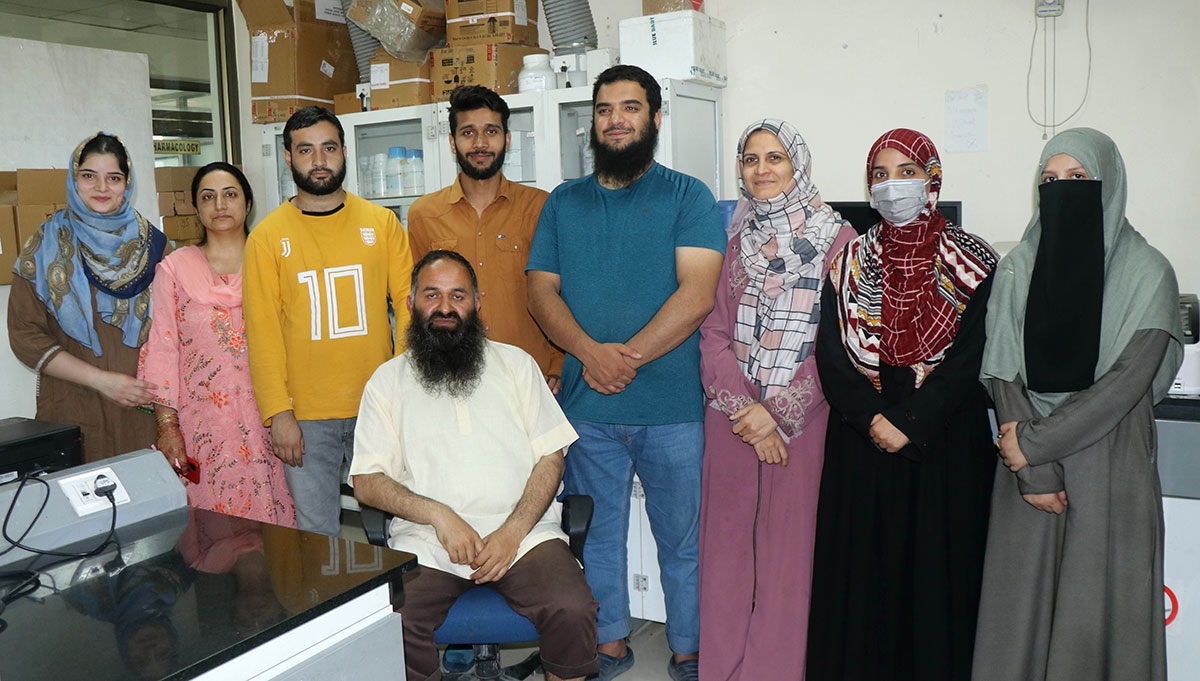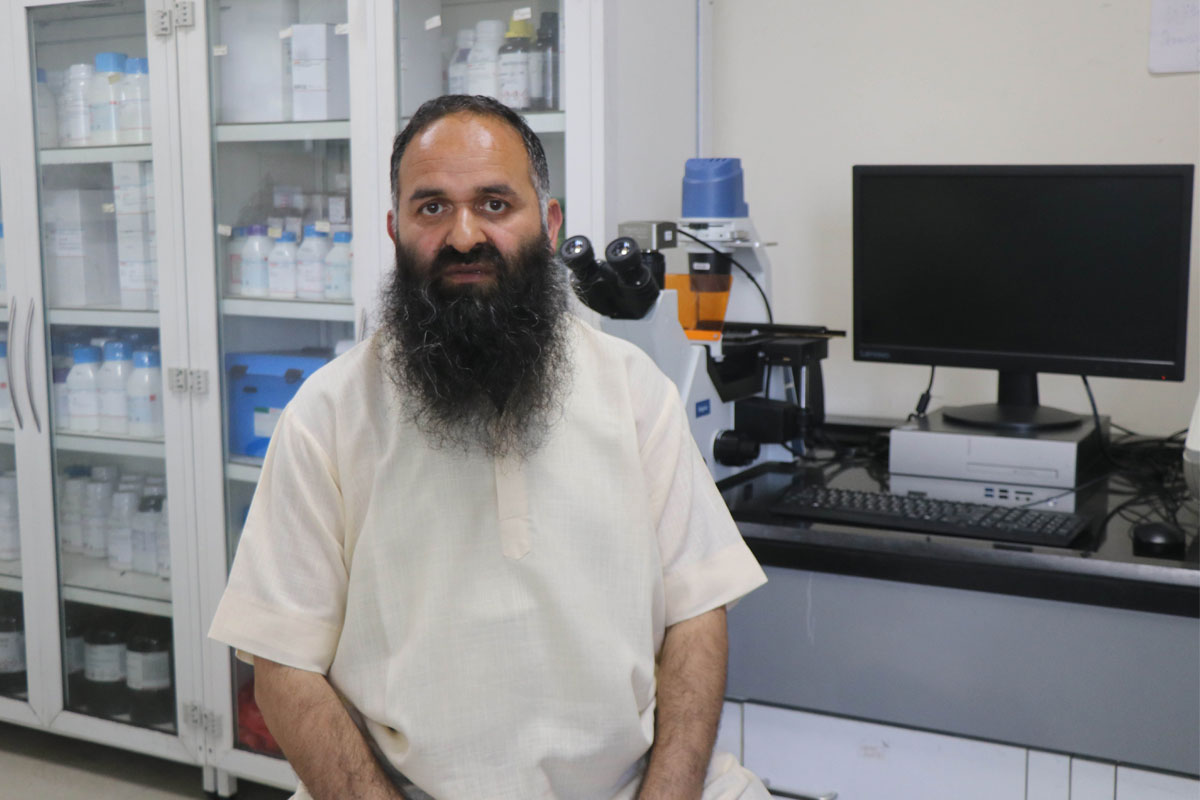Tuberculosis (TB) has seven global strains and some of them are defying the most modern therapies that science has evolved. Still one of the top human killers on daily basis, Masood Hussain and Fazil Buchh talked to two eminent Kashmir scientists working on TB and many top professionals mandated to manage the scourge on the ground. Everybody agrees that the battle against TB is far from over

The battle against Tuberculosis (TB) has been going on for many millennia. Killing almost 4500 people the world over on daily basis, this battle is still to be won completely. Countless films and books have documented the scourge and the battle against it. Over the centuries, it has thrown up new challenges – the resistance to drugs.
In his best book Tuberculosis: The Greatest Story Never Told, Frank Ryan concludes with a dire warning: the ‘old enemy’ has found a new ally in AIDS, and this drug-resistant combination is ravaging the globe – particularly the third world, and not excluding New York. Depressingly, it looks as though the battle against TB will have to be fought all over again.
Transmitted by the diseased, the TB bacteria can lodge in different organs of the body. Though the lungs are the choicest spot, they can impact any organ. It spreads the Covid19 way but the difference lies in the fact that, unlike Covid19, the slow-growing tubercle bacillus takes years to show up as an infection.
Drug Discovery
“There was a time when we would say that no drug can be made for TB, but in 1941, a successful antibiotic, streptomycin came to the market and now about 19 to 20 drugs are being used against TB in three categories,” Dr Zahoor Ahmad Parry, Principal Scientist CSIR, IIIM Srinagar. He works on drug discovery and drug development-related aspects of TB. WHO data suggests the right diagnosis, right treatment and right care helped save 55 million people in the last 20 years. The three categories of patients include those who report no resistance to drugs and require a six months treatment; those having some resistance and require a two-year course and finally patients with multi-drug resistance who require an elaborate treatment system.

The treatment protocol, however, does not offer any great help. The primary reason why TB is still a dangerous disease is that one-third to one-fourth of the overall population across the world is already infected by TB. The second problem is that 10 lakh people per year get the active disease while 1.5 million people die globally due to the disease. The disease is not related to death only, it creates the problem of deformity, involves the family of the patients, and economic instability.
The India Story
India’s TB story is not so great but the battle she intends to fight can make it a great model. Chairing the Delhi End TB Summit, in March 2018, Prime Minister Narendra Modi said his government wants to end TB by 2025, five years ahead of the TB-related SDG target of 2030. But the story is getting off the script, partly because of the Covid19 situation. The last TB statistics released by the Health Ministry suggested that 2021 witnessed a 19 per cent increase in TB patients and the tally reached 19,33,381 from 16,28,161 in 2020. Incidentally, more than 26 per cent of all TB cases across the world are from India (31 per cent among children) and it includes both multidrug-resistant TB and HIV TB cases.
In Jammu and Kashmir, Dr Parray said the data shared in the assembly five years back suggested that 40 thousand cases were detected between 2014 and 2018.
A recent study by the Department of Chest Medicine, Chest Diseases Hospital (CDH) showed the total prevalence of TB disease in 2019 to be 49.03 per 100,000 population, which reduce to 37.31 in 2020. Srinagar city reported the highest number of cases whereas Budgam and Pulwama reported the least cases in the years 2019 and 2020.
Earlier, the State Tuberculosis Officer (STO) had stated that was a sharp fall in TB across Kashmir – from 4774 cases in 2018 to 4080 cases in 2019 and only 2836 cases in 2020. Two of the 10 districts across Kashmir have been declared TB free. The prevalence of medically treated TB is higher among women (175) than men (154) and more in Kashmir periphery (187) than in the city (111).
Seeking More Details
Scientists working on TB said they are happy that the numbers are falling but they are interested in understanding how it is going down so rapidly. Most of the infrastructure that is required for detecting TB was shifted to Covd19 management and a number of patients avoided seeking treatment during the Covid19 lockdowns.
“Health Ministry issued a statement disclosing there is an 11 per cent rise in TB rate in India,” Dr Syed Beenish Rufai, a Ramanujan Fellow, currently working on enhancing the efficacy of BCG vaccine at CSIR IIIM Srinagar, said. “The MDR (Multidrug Resistant) TB is also on the rise. So we are not sure about the exact scenario.”
Rufai said that a huge population – for one or the other reason – is not accessing healthcare for managing the malady. It could be as true for remote Kashmir as it is for Arunachal. Our 2015 target was to reach and treat 40 million people globally but we were able to achieve only 37 per cent of the target,” Dr Beenish asserted. “Owing to Covid19, there was a dip to the tune of 37 per cent but that was because of the Covid19 protocol.”
Science at Work
TB management at the gross root level involving detection and treatment, however, hardly impacts the science’s struggle to find a cure. Two “good medicines” – Bedaquiline and Delamanid now available on the market are said to be helpful as a short course of therapy in patients.

But the science is still working to improve the vaccine and find new drugs. There are dozens of laboratories that work to improve the efficacy of the vaccine. Beenish is one of them. The BCG vaccine lacks adequate efficacy in adults, even in children, it does not stop them from getting TB but it stops them from getting ‘disseminated TB’, a kind of TB that spreads in the brain, TB meningitis, and is prevalent among children.
The BCG strain used for the vaccine was developed in 1921 after which different countries took the strain. “Now we have BCG Denmark, BCG Russia, and many other strains based on the country that developed it later,” Dr Beenish said. “There have been genetic and other deletions in the strain and certain characteristics of the strain have been lost due to various sub-cultures.”
There are vaccine pipelines across the globe like in Germany’s Max Plank Institute where the work on the development of vaccines is underway. The problem is that it just gets failed in the second or third phase of clinical trials. So the job is to make corrections. Beenish is one of the many scientists who are working on the correction of the vaccine so that it is effective and up-to-date.
A Career against TB
Beenish has literally dedicated her career to the battle against TB. After getting schooled from Woodland and later Kothibagh, she moved to Dehradun for graduation in medical microbiology and then a PhD at AIIMS. In her PhD, she located all the seven clinical strains of TB across India and investigated why and how these particular strains have grown in specific areas and which of them are modern strains – that can be treated and which are the drug-resistant old strains. Apart from attempting a genomic architecture of TB in India, Beenish made some assessments of the transmission and the allied issues involved with the spread of the disease.
After a year-long residency at AIIMS, Bhopal, she moved to McGill University in Canada for her post-doctorate, where she worked on the hypothesis that due to two independent cattle domestication events another variant of Mycobacterium tuberculosis complex known as Mycobacterium orygis is endemic in cattle stock of South Asia. On further follow-up, the presence of M orygis from human isolates suspected of having TB was found and no presence of M bovis isolates from India, which raised a possibility of M orygis as a zoonotic cause of tuberculosis transmitting in humans for which further research needs to be performed. Her post-doctoral research focus was the construction of the first circular reference genome of M orygis and working on the Type VII secretion system, the secretome of Mycobacterium orygis in comparison with other members of the Mycobacterium tuberculosis complex. This in future will enhance the understanding of molecular characterization, identification of virulence factors, molecular epidemiology and host-pathogen interaction of this less known human pathogen,
Now, back home, she is working on improving the weak BCG vaccine that can help India fight TB. Explains in a layman’s language, Beenish said that the bacteria are routinely releasing vesicles in the host body that have definite specific tasks to do. “I am trying to engineer a vesicle that can trigger with the vaccine and help the host to fight the bacteria,” Beenish said. “The project is quite huge and invokes a lot of things at different levels but we have just started.”
Misleading Infection
TB, he said is interesting because despite impacting an organ it rarely shows up thus deceiving the clinician. TB is seen as an ally and a friend of every human enemy. Interestingly, TB can infect any human organ. It mimics the symptoms of the related ailments of the particular organ. The doctor usually gets a hard time recognizing the symptoms. For instance, if a patient has TB in the stomach, symptoms will be from h-phyloria. Similarly, bone TB will mimic other bone-related diseases. Doctors give the dose of general antibiotics first and if they don’t work, then suspicion regarding TB arises.

“As far as pulmonary TB is concerned, the patient having cough for more than two weeks, he or she is treated as tuberculosis suspect and is asked to go for TB tests,” Dr Naveed Nazir Shah, Professor and Head Chest Medicine GMC, Srinagar, said. “Besides, constitutional symptoms include mild fever, cold sweats, loss of appetite, and weight loss. Some types of TB like hip TB are difficult to diagnose.”
TB even has a role in the nose-diving of the Total Fertility Rate (TFR) of Jammu and Kashmir women from two to 1.4 in a couple of years. It is the average number of children a woman can bear in her lifetime and Jammu and Kashmir is far behind the national average.
A cross-sectional study carried out in the Department of Microbiology at the Government Medical College, Srinagar from June 2014 to May 2018, involved 193 patients suspected of female genital TB. Of them, 117 (60.6%) were suffering from primary infertility while 76 (39.4%) were suffering from secondary fertility. Most women were in the age group of 25-35 years followed by 35-45 years. The mean age of patients in the study was 30 years.
Genital tuberculosis affects the fallopian tubes and endometrium significantly and contributes to infertility in developing countries. Mycobacterium tuberculosis may cause irreversible damage to the fallopian tube which may not get corrected by medical and surgical methods. This study was undertaken to determine the prevalence of infertility as evaluated by microbiological and histo-pathological techniques.
In this study, the prevalence of genital TB was found to be 6.73 per cent. The overall prevalence of genital TB in infertile women has been found to be 24.2 per cent. It is possible that the actual prevalence of genital TB in our setting may be higher due to the fact that most of the cases are asymptomatic or present with non-specific symptoms and therefore may go undetected.
“The female genital TB is an under-reported issue,” Dr Duha Qari, Resident Obstetrics and Gynaecology at SKIMS MCH Bemina, said. “In recent years, we observed in our clinical practice that it has emerged as one of the significant causes of infertility in Kashmiri society. Female genital TB is an underestimated disease mainly due to its asymptomatic nature and lack of sensitive tests. It is detected most frequently when a woman presents with unexplained infertility”
“Nearly 30 per cent of infertility cases in Kashmir are related to the intrauterine tract TB of female partner as confirmed by various gynaecologists. After the six-month treatment of TB, they conceived normally. Diagnosis of TB is very complicated but the patient can have some sense of it and at last, TB has associated stigmas due to which they are not able to come forward and speak about it,” Dr Qari added.
Hunt for Better Drug
Quite a few rooms away from Beenish’s laboratory work Dr Zahoor A Parray, for the last many years. Now a principle scientist, Parray’s scientific career has also been around the different facets of TB management. In his PhD at PGI Chandigarh, Parray worked on a drug application protocol that would help patients to consume one table a fortnight rather than sic a day. He used nanotechnology to create a base of the project that is now in clinical trials. It was there, that Parray also worked to trace the anti-TB properties of an anti-fungal drug that was being used in certain diseases. Now, the same project the base of which he laid has attracted major funding.

After spending some time at Pretoria in South Africa working on improving polymers, Dr Parray moved to John Hopkins where carried out a series of research as part of his second post-doctorate. These included re-evaluating an existing drug molecule against TB that had wrongly been assessed earlier; assessing a brand new drug against TB; and, most importantly, creating a reference model to understand the similarities and differences between the TB pathology as exhibited by guinea pigs and human beings. He said the use of mice models in TB hardly has any similarity with human beings because rodents have a weak immune system.
Back home as a Ramalingaswami Fellow, Dr Parray was bubbling with ideas only to find the crippling lack of infrastructure at CRIS in Srinagar. “My colleagues at John Hopkins were considerate enough to permit a study there that I could associate with from Srinagar,” Dr Parray said. “We worked on a drug combination that had some impact on MDR cases in which this drug could help trigger results in 10 months instead of 24.” He said the drug is in use now.
With infrastructure improving, Dr Parray’s team developed a PAMCHD molecule having enough capacity to fight TB and almost every scientific body started funding the project that is still underway. His laboratory which has almost a dozen researchers is working on a number of projects including one molecule that helps fight a TB-HIV handshake better.
However, what excites Dr Parray most was his team’s discovery of the existence of 256 strains of actinomycetes (bacteria) acids in Ladakh water bodies, 59 are anti-biotic producing and 37 of them have visible capacity to fight TB by producing molecules. “We are working on all these aspects in the battle against TB and we pray that we succeed,” Dr Parray said.
Drug Resistance Rising
Dr Parray, however, insists that though the scientific community is working overtime across the globe, the real fear is that drug resistance will mark the undoing of everything.
If the resistance is not managed in time, humanity will return to the days of the celebrated romantic poet, John Keats who died of TB at the age of 25 in 1820.
I know the colour of that blood;
It is arterial blood;
I cannot be deceived by that colour;
That drop of blood is my death warrant;
I must die.















